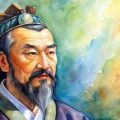
Recently, I was left in awe at how some of the world’s best athletes dedicate years of their lives to honing their skills, sacrificing immense amounts of time that could be spent on other, potentially more enjoyable, things. It goes without saying, that an immense amount of meticulous planning and management goes into preparing for a chance to stand at the top of the podium.
Although I’m pretty sure most athletes wouldn’t call their quest to win an Olympic gold medal a project, or their master plan a “project management plan,” it’s hard to escape the unmistakable correlations between the two. Olympic athletes, much like successful project managers, utilize key project management principles to rise to the top of their game. So what can a project manager learn from an Olympic athlete? Here are a few ideas:
- Clear Goals and Objectives
- Detailed Planning and Scheduling
- Leadership and Team Collaboration
- Continuous Monitoring and Adaptation
Clear Goals and Objectives
 Every Olympic athlete begins their journey with a clear vision and well-defined goals. These goals are specific, measurable, achievable, relevant, and time-bound (SMART), providing a roadmap for their training and performance.
Every Olympic athlete begins their journey with a clear vision and well-defined goals. These goals are specific, measurable, achievable, relevant, and time-bound (SMART), providing a roadmap for their training and performance.
- Specific. Instead of a vague aim like “improve performance,” they target precise outcomes, such as “reduce 100-meter sprint time by 0.2 seconds” or “increase weightlifting total by 10 kilograms.”
- Measurable. Athletes regularly record their performance metrics, such as lap times, weights lifted, or scores in practice sessions. This data-driven approach allows them to objectively assess their improvement and make necessary adjustments.
- Achievable. While setting ambitious goals, Olympic athletes also ensure that these goals are realistic and attainable. They understand their current capabilities and design their training plans to incrementally push their limits without risking injury or burnout.
- Relevant. Goals must be relevant to the athlete’s overall objective of excelling in their sport. This means prioritizing activities and training methods that directly contribute to their performance in competition.
- Time-bound. Athletes operate within strict timelines, often working towards peak performance for specific events like the Olympic Games. This time-bound approach helps them stay focused and motivated, ensuring they make consistent progress.
Olympic athletes are never satisfied with the status quo. They constantly seek ways to enhance their performance, whether through new training techniques, advanced technologies, or innovative strategies. This relentless pursuit of improvement is the essence of high-performance project management.
Detailed Planning and Scheduling
 It’s hard to overstate the importance of planning, for an athlete that wants to win an Olympic gold medal. The aforementioned goals are transformed into detailed training plans. These plans, akin to project schedules, outline the daily, weekly, and monthly activities required to achieve their objectives.
It’s hard to overstate the importance of planning, for an athlete that wants to win an Olympic gold medal. The aforementioned goals are transformed into detailed training plans. These plans, akin to project schedules, outline the daily, weekly, and monthly activities required to achieve their objectives.
This process begins years in advance, with athletes working alongside coaches and other support staff to create comprehensive plans tailored to their specific needs and goals. These plans are highly detailed, breaking down the athlete’s training into daily, weekly, and monthly schedules that balance physical conditioning, skill development, and recovery.
Training is divided into phases—preparatory, competitive, and transition—to systematically build up strength, endurance, and performance. Each phase focuses on different aspects, ensuring the athlete peaks at the right time. Nutrition and rest are also crucial, with personalized meal plans and sleep schedules designed to optimize recovery and performance.
And just like project managers use milestones to track progress, athletes set intermediate goals to mark significant achievements along their journey. These milestones help maintain motivation and provide opportunities to assess and adjust their training plans.
Technology also plays a significant role in monitoring progress, with athletes using data from wearables and other tools to track their performance metrics. The athlete makes adjustments based on these insights, ensuring that training remains effective and aligned with their goals. Mental preparation is equally important, with athletes incorporating visualization techniques, mindfulness, and psychological coaching to enhance focus and resilience.
Through this disciplined approach, Olympic athletes fine-tune every aspect of their preparation, giving them the best possible chance to achieve their dreams of winning gold.
Leadership and Team Collaboration
While Olympic athletes are often seen as individual competitors, their success is rarely achieved alone. They rely on a team of coaches, trainers, nutritionists, and medical professionals who provide expert guidance and support.
- Coaches play a crucial role as leaders, guiding athletes through their training programs and helping them stay focused on their goals. They provide technical expertise, strategic advice, and motivational support, much like project managers lead their teams towards project completion.
- Collaboration and Communication within the athlete’s support team are essential for success. Regular meetings, feedback sessions, and performance reviews ensure that everyone is aligned and working towards the same objectives. This collaborative approach mirrors the teamwork required in successful project management.
Continuous Monitoring and Adaptation
High-performance athletes continuously monitor their progress and adapt their training plans based on real-time feedback. This iterative approach is similar to Agile project management, where ongoing assessment and flexibility are key.
- Performance Metrics
Athletes track various performance metrics, such as times, distances, weights, and scores. By analyzing this data, they can identify trends, strengths, and areas for improvement. This data-driven approach allows for informed decision-making and precise adjustments to their training. - Video Analysis
Many athletes use video analysis to scrutinize their technique and form. By reviewing footage of their performances, they can identify subtle flaws and make corrections. This method is akin to quality control in project management, ensuring that every aspect of their performance meets the highest standards. - Feedback Loops
Regular feedback from coaches and support staff is invaluable. Athletes use this feedback to refine their techniques, adjust their strategies, and optimize their training plans. This iterative process ensures continuous improvement and adaptation to changing conditions.
Conclusion
Above all, Olympic athletes are committed to excellence. This unwavering dedication drives them to consistently push their limits, strive for improvement, and overcome challenges. Their commitment mirrors the project management principle of delivering high-quality results.
Olympic athletes exemplify the power of project management principles in achieving extraordinary success. By setting clear goals, meticulously planning their training, collaborating with their support teams, continuously monitoring their progress, and maintaining an unwavering commitment to excellence, they rise to the top of their game. Their journey from aspiring athletes to Olympic champions is a testament to the effectiveness of project management in turning ambitious dreams into remarkable achievements.











Leave a Reply